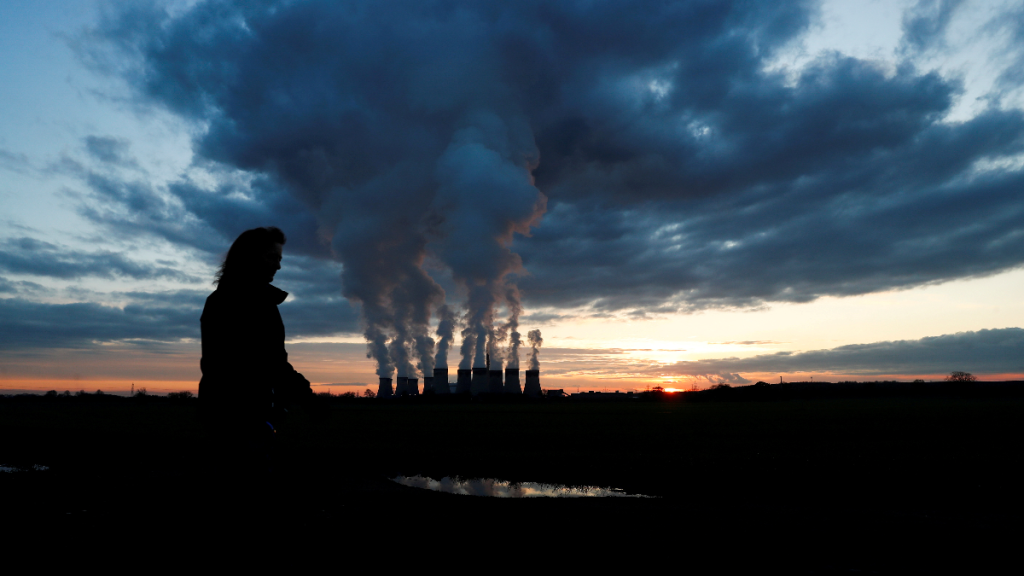
Europe’s carbon price hit a record 100 euros ($106) per tonne on Tuesday, a long-awaited milestone that boosts the economic case for some green technologies and hits industry with its largest bill yet for carbon dioxide emissions.
The European Union has pledged to cut its emissions by 55% by 2030 versus 1990 levels. One of its main tools to make that happen is its carbon market, which requires European industry and power plants to buy permits to cover their CO2 emissions.
Benchmark EU carbon permit prices hit 100 euros per tonne of CO2 on Tuesday, the highest since the scheme launched in 2005.
Incentivising green investments is the scheme’s aim. If the carbon permit price is higher than the investment cost of a green technology, then companies will be motivated to choose the investment.
At current levels, CO2 prices provide a strong incentive to invest in green technologies to cut the use of fossil fuels, the price of which surged last year and remains relatively high, Mark Lewis, head of climate research at Andurand Capital, said.
Green hydrogen, produced using renewable energy is seen as important for decarbonising industries including steelmaking. Most hydrogen is currently produced using gas, which emits CO2 but is cheaper than the electricity-based method.
“If you think we’re permanently going above 100 [euro carbon prices], then that’s a very constructive environment for green hydrogen,” Lewis said, though he added that CO2 prices could fall back below that level because of bearish factors.
They include an expected increase in emissions-free nuclear and hydropower generation this year, which could shrink the call on fossil fuel-based power plants that buy carbon permits.
GREEN TECH BOOST
A price of 100 euros in the EU’s emissions trading system (ETS) should also trigger investments in carbon capture and storage (CCS), where emissions are captured and stored in depleted oil and gas fields.
CCS is a decarbonisation route for industries including cement and petrochemicals, but no EU country has yet built a large-scale CCS plant. The largest project being developed in the Netherlands secured national funding to bridge the gap between costs and the CO2 price.
With carbon at $100 per tonne, most CCS applications are economic, taking capital and operational costs into account, the Global CCS Institute says.
However, industry’s ability to make significant low-carbon investments has been squeezed by an energy crisis since Russia cut gas flows to Europe following its invasion of Ukraine last year.
The resulting record-high energy bills forced some fertiliser, chemicals and aluminium smelters to curb production – with some yet to reopen.
Europe also faces competition as a location for industries as the United States and China are each offering massive subsidies for companies to produce green tech on their soil.
The United States does not have a nationwide carbon price, although states including California do.
“Companies had very clear plans with concrete projects to implement breakthrough technologies at scale… At present these projects are still there,” Adolfo Aiello, Deputy Director General at steel industry group Eurofer, told Reuters.
“If the [energy] crisis continues and drags financial resources out of the companies, it will be more and more challenging for the companies themselves to keep financing these investments,” he said, adding that U.S. subsidies for green steel and hydrogen had exacerbated the challenges for European manufacturers.
The European benchmark Dutch front-month gas price has fallen almost 85% since hitting a record high over 340 euros per megawatt hour (MWh) last August, but at around 50 euros/MWh on Tuesday it remains well above historical levels. The price had stayed below 30 euros/MWh for at least a decade until mid-2021.
An EU carbon price of 100 euros adds 30-40 euros to the cost of a tonne of primary steel production, according to Eurofer.
END TO FREE PERMITS
To help create a level playing field, the EU gives industry free CO2 permits to help them compete with international rivals, which critics say has removed the incentive to cut emissions. Industrial emissions have barely fallen in recent years.
The power sector, which does not get free CO2 permits, has cut emissions significantly.
The EU auctions 57% of total permits in the ETS and allocates 43% for free, although the share of emissions covered by free permits varies between industries. For example, blast furnace-based steelmakers were given around 80% of their CO2 permits, commodity industry analysis firm CRU said.
The EU agreed last month to gradually replace free permits by 2034 with a carbon tax on imported goods – a proposal that faced strong lobbying from industries keen to receive free permits for longer.
European cement association Cembureau’s CEO Koen Coppenholle said Europe’s cement-makers faced “very significant carbon costs” not borne by foreign competitors and called for a quick implementation of the carbon border levy.
He also urged the EU to quickly develop its plans – parts of which were unveiled in February – to increase European funding and subsidies for companies to scale up green industrial technologies.
($1 = 0.9392 euros)
BRUSSELS/LONDON (Reuters)
Inside Telecom provides you with an extensive list of content covering all aspects of the Tech industry. Keep an eye on our News section to stay informed and updated with our daily articles.